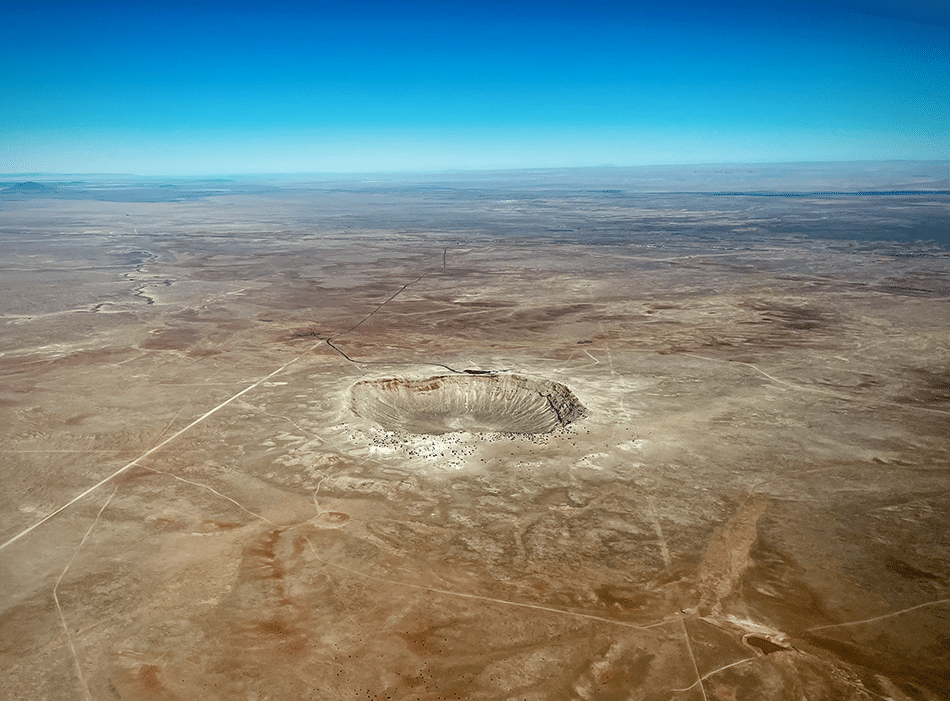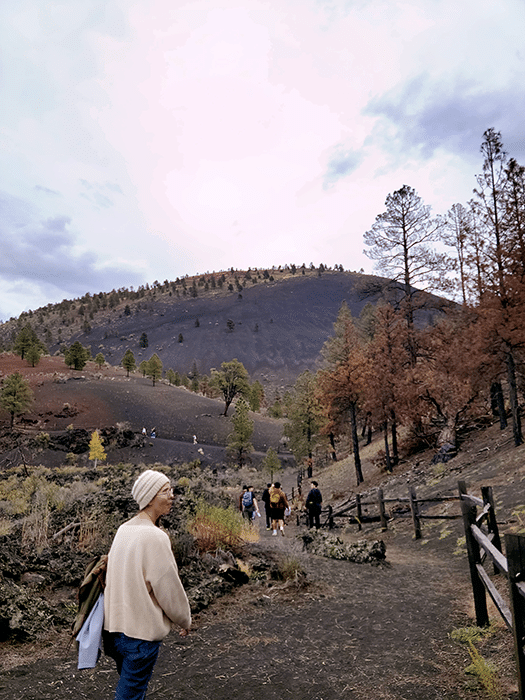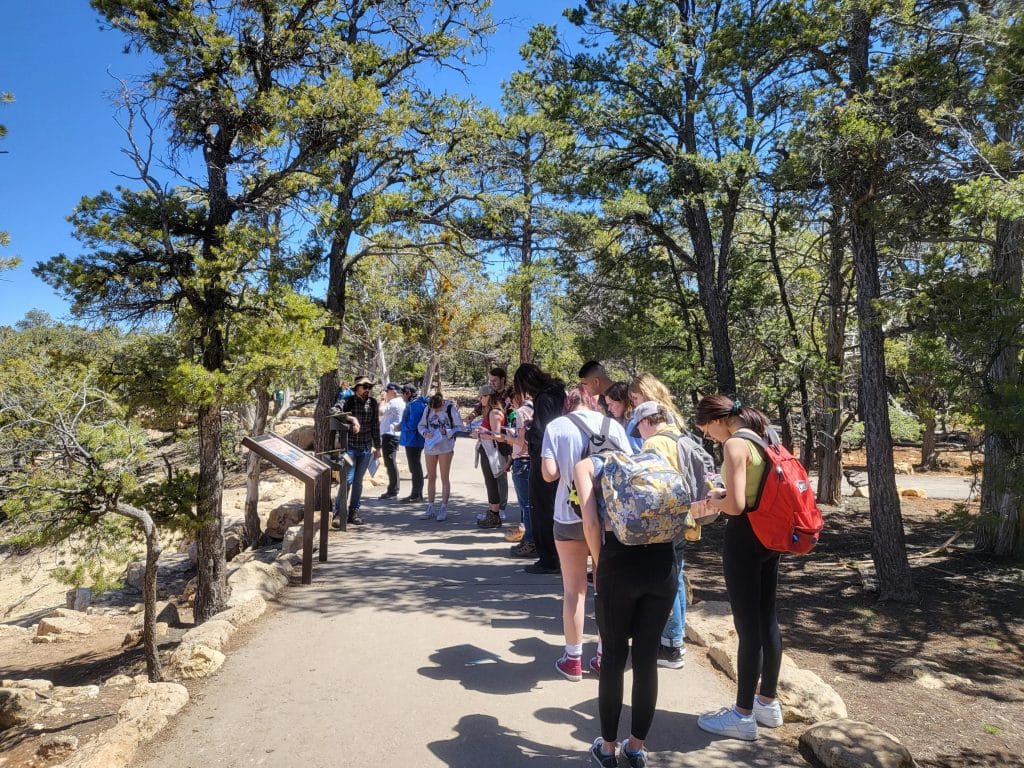Where can you study extraterrestrial geology without leaving the planet? Northern Arizona, of course. The geology of this region, from Grand Canyon to Meteor Crater, offer unique educational experiences for students of astronomy and planetary science and may help researcher unlock clues into one of the most elusive questions—is there life on other planets? NAU’s Department of Astronomy and Planetary Science offers a lab course, taught by Ph.D. student Ian Marrs and previously taught by Ph.D. student Jessica Walsh, who helped develop the curriculum, that takes students to these other-worldly locations. Marrs talks about how these field trips help bring the far-off worlds that astronomers study much closer to home.
The search for life beyond Earth—a prospect that has intrigued humanity for centuries. Stories of life on worlds other than Earth have been recorded for more than 2,000 years. As recently as the early 1900s, Percival Lowell (of Lowell Observatory fame) believed that the face of Mars was crisscrossed with the artificial waterways of an alien civilization. (It’s not). In Life in the Universe, NAU students can learn about how the search for extraterrestrial life began, how it continues and how it may be undertaken right in NAU’s back yard.
My name is Ian Marrs, and I am a Ph.D. student at NAU working with professor Mark Salvatore in the Department of Astronomy and Planetary Science (DAPS). I am a geologist by training, and as a member of DAPS, I study the geology of celestial bodies. Specifically, my research focuses on understanding the chemistry of rocks found in dry places (deserts, Antarctica, Mars, etc.) Broadly, I plan to study a process known as abiogenesis, or the development of life from non-living matter.

It may not be immediately obvious why NAU is the perfect place to learn about life on alien worlds, but the geology of northern Arizona is world-renowned, and with good reason. Grand Canyon National Park showcases more than 2 billion years of geologic history in unprecedented detail. Meteor Crater National Monument hosts the most well-preserved impact crater on the planet. Sunset and S P Craters represent a form of volcanism rarely seen outside the North American Southwest. All of these locations have been used as field trip destinations for Life in the Universe and will be again in future semesters. Using these awe-inspiring locations as destinations for field trips is an experience that no other university can offer, and NAU is uniquely positioned to provide these incredible experiences for its students.
At Meteor Crater, we discuss how meteor impact events are both bringers of life and potential extinction events. Comets and asteroids are known to contain compounds crucial to life, such as water and organic molecules, which they bring to Earth by impacting its surface. However, they also have the potential to destroy life, such as the dinosaur-killing Chicxulub impact event. Meteor Crater is the most well-preserved impact crater on Earth and is, therefore, a useful field location to discuss impact events. Impact craters are also seen on nearly every solid body in the solar system.
Sunset and S P Craters give students an up-close-and-personal look at volcanoes and lava flows. Walking through these relatively recent lava flows

gives the students a striking example of the scale and context of volcanic eruptions. Volcanoes, just like meteor impacts, can both help and hinder the development of life. Volcanoes produced Earth’s ancient atmosphere, paving the way for life to first crawl onto land, but they can also produce tremendous explosions, burning lava flows, earthquakes and toxic gas. Volcanoes may even be supporting life beneath the icy crust of Jupiter’s moon Europa.
The Grand Canyon is one of the best places on Earth to view a largely continuous exposure of the terrestrial geologic record. This location is relevant for the discussion of life in the universe because it demonstrates to students how investigating geologic material can inform our understanding of the history of a planet in terms of biology, geology, meteorology, etc. Such investigations are how professional planetary scientists search for life on other planets and students of Life in the Universe get to experience that first-hand.
In my two semesters of teaching Life in the Universe, I’ve had the pleasure of seeing students react to seeing these locations for the first time. “It doesn’t look real!” students exclaim at the Grand Canyon. “It’s hard to wrap my mind around.” students say, staring across the expanse of Meteor Crater. “It’s like another world” are all phrases that I have heard from numerous students on these trips. These experiences, along with the work we do in the classroom, make this class rewarding to teach and, I hope, rewarding to take.



